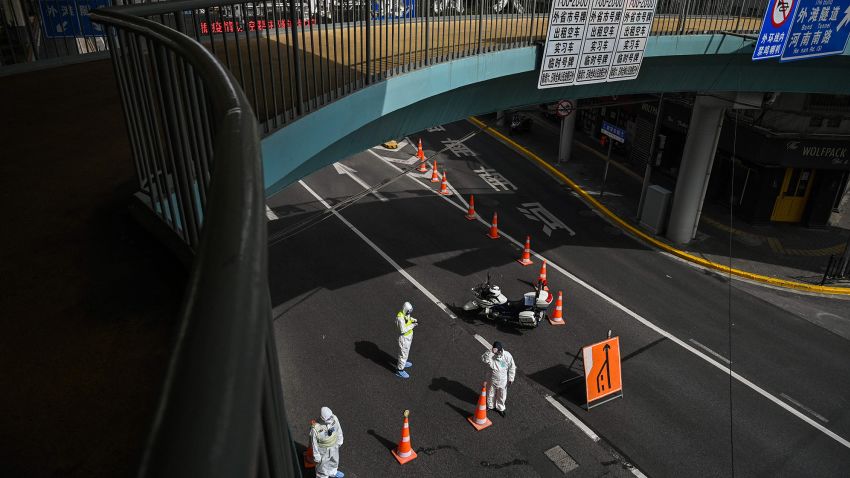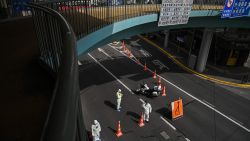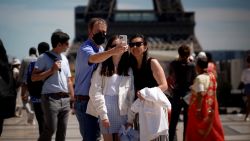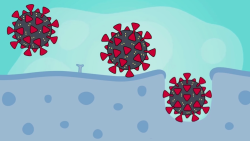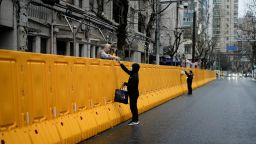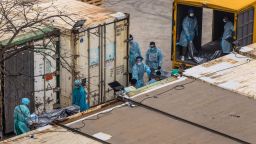Editor’s Note: A version of this story appeared in CNN’s Meanwhile in China newsletter, a three-times-a-week update exploring what you need to know about the country’s rise and how it impacts the world. Sign up here.
On a cold March afternoon in a locked-down city in China’s northeastern Jilin province, Chang Liping was standing outside a hospital, desperate and unsure of where to go.
Chang had been struggling to get her husband, who suffers from a kidney condition, into dialysis for four days – a routine treatment that’s become a seeming impossibility after their city of Changchun was forced into a strict lockdown earlier that month, in response to an outbreak of Covid-19.
She’d taken him to the hospital designated for residents whose housing blocks – like theirs – had positive Covid-19 cases, Chang said. Even still, they were turned away. The best a community worker could do, according to Chang, was add her husband to a queue.
“But how can he wait? … He has been afraid to eat and drink for four days … for fear of poisoning his body,” Chang said. “The hospital won’t let us in, and we don’t know where to go …. now do I have to watch him die?”
In another part of the city, Li Chenxi was also in a panic, unable to access care for her mother, who has endometrial cancer. For more than two weeks, her mother had received no treatment after the industrial city of 8.5 million went into lockdown on March 11. Their local hospital wasn’t accepting patients during the outbreak, Li said, and she hadn’t found another opening.
“The only thing we can do is wait. But the tumor won’t wait for us. The tumor is growing every day,” Li said.
“There are so many diseases that are more serious than Covid … My mom has been diagnosed with a terminal illness, and I just want to get the medicine as soon as possible so I can keep her alive,” Li said through tears.
For Li and Chang, their loved ones’ individual health crises are inexorably caught up in China’s larger one, as the country grapples with its first major outbreak of Covid-19 in more than two years. Now multiple cities – including the financial hub of Shanghai and several cities in the country’s northern “rust belt” – have been placed under government mandated lockdown, part of China’s uncompromising “zero-Covid” strategy.
For two years, that approach – to attempt to stamp out all infections through stringent isolation measures, mass testing and tracing, and blunt lockdowns – has been hailed by the ruling Communist Party as a success.
But now, as the country struggles to get a handle on a weeks-long outbreak of the highly infectious Omicron BA.2 variant, horror stories like Chang’s and Li’s are, too, becoming part of what “zero-Covid” means for China.
Overwhelmed
Within that “zero-Covid” regime, medical systems can be quickly overwhelmed by the requirements to isolate all positive cases – regardless of their severity – even after rules were loosened last month to allow patients to be sent to central quarantine facilities and not only hospitals.
Regular tasks for medical workers can also be complicated by procedures to avoid cross-contamination, while hospital emergency wards are regularly closed for “disinfection” due to Covid-19 exposure.
And for those under lockdown, traveling to hospital can be challenging, often requiring special permission or ambulances.
All this has had the unintended consequence of putting the health of vulnerable people at risk, as health authorities try to protect the country against a massive outbreak of Covid-19.
Local governments grappling with recent Covid-19 outbreaks have acknowledged these shortcomings – and in many cases have rolled out support hotlines and other measures – like permits to leave restricted compounds – to help people access medical care.
But this may not always be enough.
In response to a request for comment from CNN on Wednesday, the Changchun Municipal Government said it had already addressed access to medical treatment and issued directives “emphasizing that priority be given to (critically ill) patients.”
“There is no problem now,” said a representative, who declined to be named, in a call that CNN placed just hours after speaking to Li and Chang.
Hospitals cited by the women did not answer repeated calls.
Crisis in Shanghai
Changchun is not alone in facing these issues.
In the financial hub Shanghai, widely considered China’s most well-equipped and progressive city, authorities have acknowledged shortfalls in access to emergency medical care as they contend with the unforeseen repercussions of inflexible zero-Covid policies.
With thousands of new cases reported daily, most of the city of 25 million is now under strict lockdown, as of Friday morning.
Under an earlier scheme, the eastern half of the city – some 11 million people – were restricted to their homes for mass testing over four days, to be followed by the second half of 14 million for the next four.
But on Thursday evening, authorities extended lockdown measures for most of those eastern areas – some of which had already been under more targeted lockdown for weeks, with no clear end in sight.
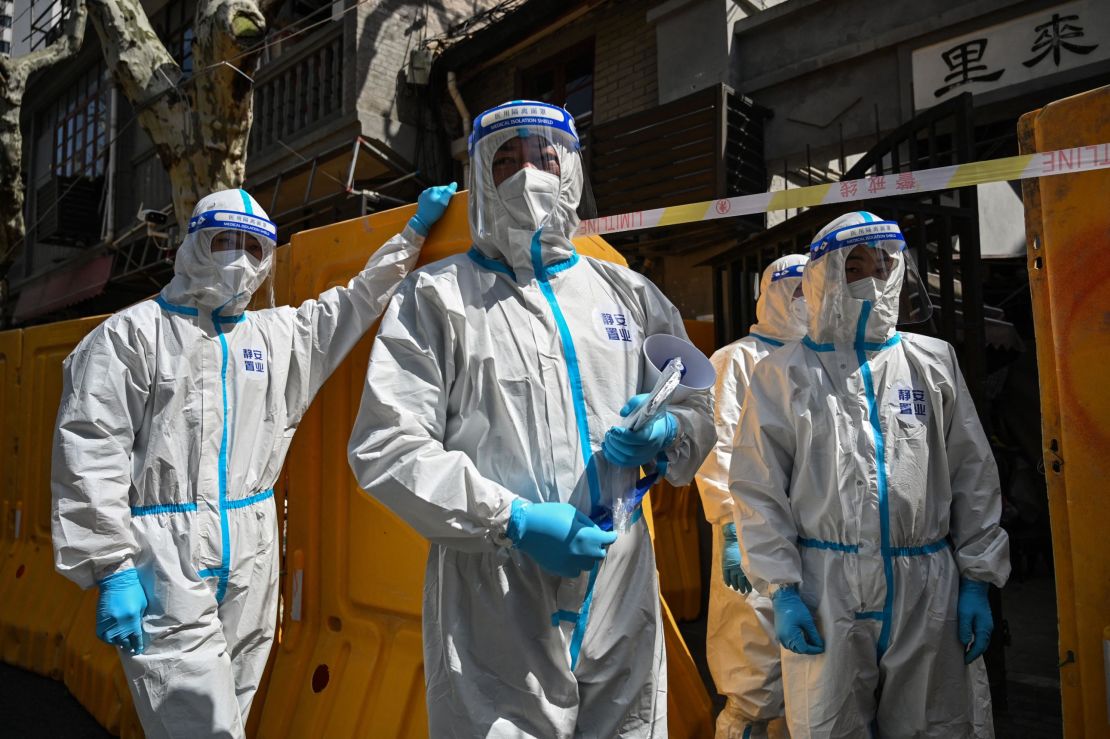
The vast majority of Shanghai’s more than 30,000 cases in March have been recorded as asymptomatic or mild, with the city reporting no deaths so far. Nonetheless, there’s been tremendous strain on the health care system, as patients must stay at hospitals and quarantine centers – which workers are rushing to construct in stadiums and exhibition centers.
Last week, an off-duty nurse died after being turned away from an emergency ward at her own hospital that was closed for disinfection, the hospital confirmed.
Another resident in the locked-down area of Pudong died Wednesday after suffering a medical emergency in his home before being able to reach the hospital.
A widely shared video on Chinese social media that appears to have since been deleted by the original poster shows residents gathered around an ambulance pleading for help, and a defibrillator, for their neighbor.
But the medical worker in view, dressed in a hazmat suit and seated inside the ambulance, appeared not to budge. The vehicle was already meant to transport another resident, a statement from the local health authorities later said.
This case – the circumstances of which could not be independently verified by CNN – prompted an apology from the Shanghai Pudong New District Health Commission on Thursday that put the onus on the medical worker. The commission said that even though the health worker was trying to focus on treatment of another patient, what he did was “inappropriate” and due to “lack of experience.”
But some observers on social media blamed the system. “We are not killed by Covid, but by the Covid control measures,” noted one popular comment on the Twitter-like Weibo.
‘Lives first and people first’
Even as its cities struggle to cope with the burden of zero-Covid, it’s clear that China’s leadership fears the alternative would be worse – with health officials in recent days emphasizing the dangers of the health system being overwhelmed if the virus spreads widely in the population of 1.4 billion, especially as vaccinations lag among the elderly.
Instead, China has attempted to rally its people to support their Covid-19 measures under the banner of “lives first and people first” – a phrase attributed to a speech by Chinese leader Xi Jinping last month, where he exhorted authorities to “achieve maximum effect in prevention and control, with minimum cost.”
For two years China’s “zero-Covid” policies have been broadly popular – especially as state media highlighted the horrors of outbreaks overseas and instilled fear about the disease.
But now, there are signs people are growing concerned over that cost, according to health security expert Nicholas Thomas, an associate professor at City University of Hong Kong.
“There is an emerging public concern about both the threat of the virus and the social and economic challenges posed by the emergency responses,” Thomas said.
“The Chinese authorities now face the double challenge of reassuring the public and, simultaneously, battling a virus that has escaped its control.”
